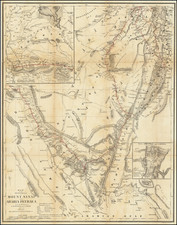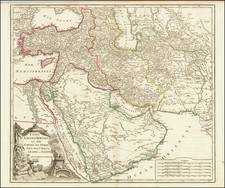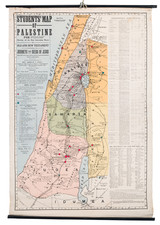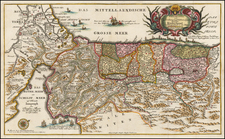This exceptional map of modern-day Israel, extending from Gaza and Moab in the south to Sidon and Lebanon in the north, is a Czech edition published in Prague in 1592. Notably, this edition employs a unique woodblock, distinct from those used in other versions. It traces the Jordan River in the east, providing a thorough geographic representation of the region during this historical period.
The map is a product of Heinrich Bunting's work, "Itinerarum Sacrae Scripturae," a comprehensive compilation of the travels of biblical figures. This work was the most exhaustive summary of biblical geography of its time. First printed in Helmstadt in 1581, "Itinerarum Sacrae Scripturae" saw the production of more than 60 editions in various languages, including German, Danish, Swedish, Dutch, Czech, and English, until 1757.
Bunting's work gained immense popularity for its detailed and accurate depiction of the geography mentioned in the Bible. His maps, including this one of modern-day Israel, have become valuable historical artifacts, offering insights into both the geographical understanding and the printing techniques of the late 16th and early 17th centuries.
Henrich Bunting was a Protestant theologian and teacher born in Hanover, in what is now Germany. He attended the University of Wittenberg and graduated in 1569. He then began work as a preacher but caused some controversy with his teachings; he was dismissed from appointments in both Lemgo and Goslar.
He is best known today for his book, Itinerarium Sacrae Scripturae (Travel book through Holy Scripture), a travel collection and commentary of the geography of the Bible. The book provided the most complete summary of biblical geography then available and described the Holy Land by following the travels of various notable people from the Old and New Testaments. First published in Madgeburg in 1581, Itinerarium Sacrae Scripturae was a very popular book for the time. Over 60 editions were published between 1581 and 1757.
A particularly notable feature of the book were its many woodcut maps, many of them showing unique depictions of geographic features and continents. In addition to the conventional maps, the book also contained three figurative maps; the world depicted using a cloverleaf design (thought to possibly represent the Trinity with Jerusalem in the center), Europe in the form of a crowned and robed woman, and Asia as the winged horse Pegasus.










![[Tel Aviv - Yafo] A View of the City and Port of Joppa at Present Called Jaffa. According to our modern Travellers](https://storage.googleapis.com/raremaps/img/small/89073.jpg)



![[Heightened with Gold Leaf! -- Paul's Travels ] De Reysen Christi Des Heyland en Pauli met andere syne Bloedgetuygen](https://storage.googleapis.com/raremaps/img/small/72900.jpg)